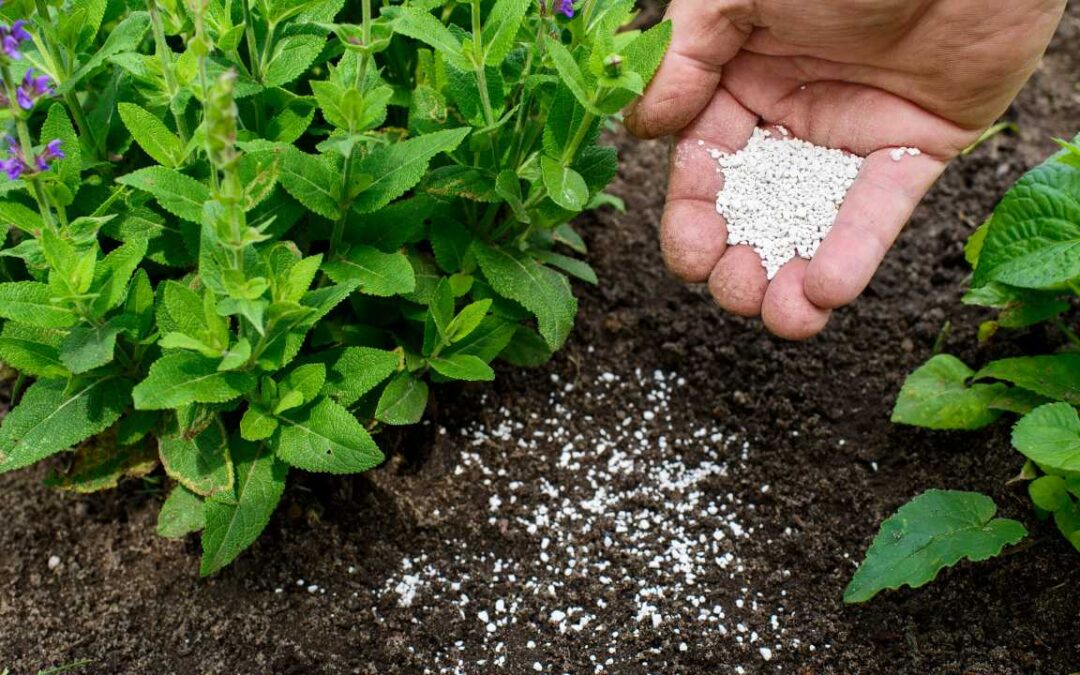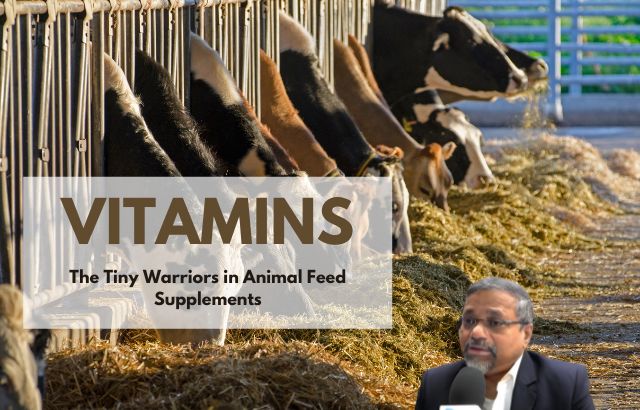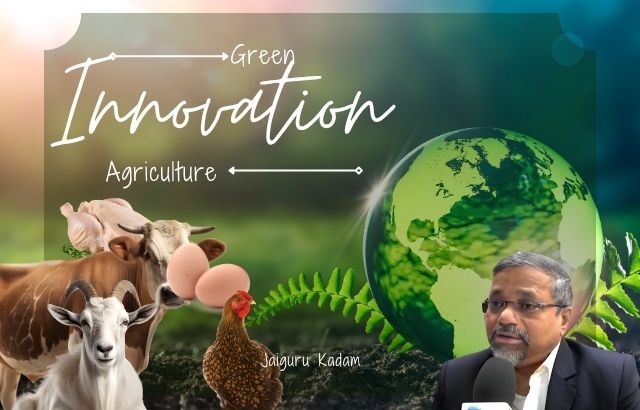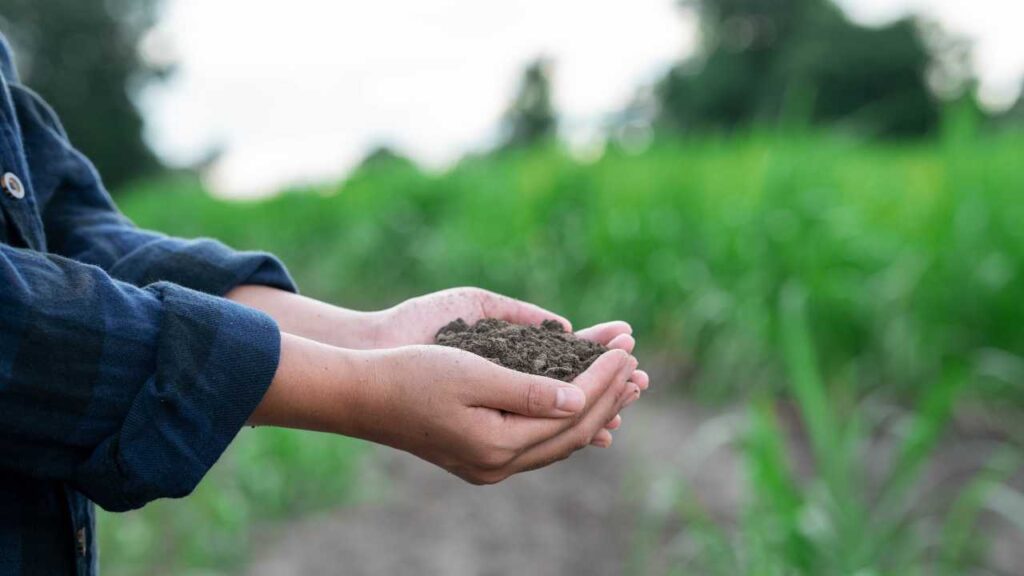Who are Green Innovators?
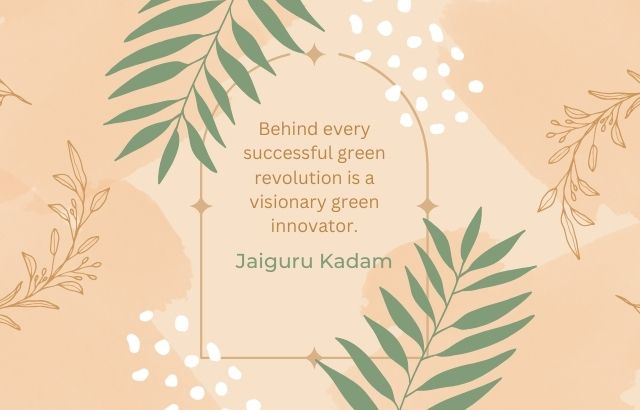
Green innovators are those who push the boundaries of sustainability through creative thinking, innovative solutions, and cutting-edge technologies. They often work in industries that have significant environmental footprints, such as agriculture, energy, and manufacturing. The goal is not only to reduce harmful impacts but also to create systems that work in harmony with the environment.
In the agriculture sector, green innovators like Jaiguru Kadam have made it their mission to develop solutions that promote soil health, conserve water, reduce carbon emissions, and improve crop yields—all while supporting biodiversity and ecological balance.
The Role of Green Innovators in Agriculture
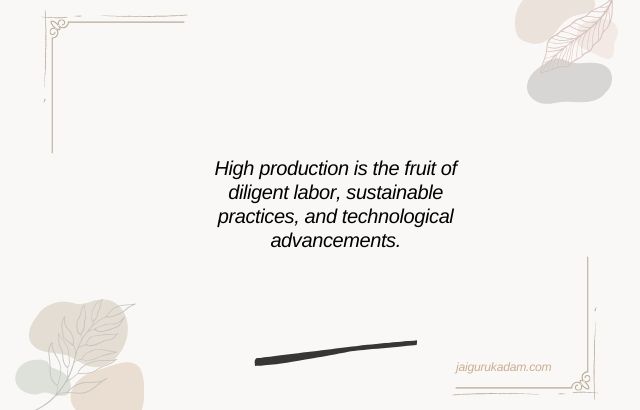
Agriculture has long been one of the largest contributors to environmental degradation, but it is also an area where significant progress can be made in sustainability. Green innovators like Jaiguru Kadam are working tirelessly to find new ways to reduce agriculture’s ecological footprint.
1. Soil Health and Regenerative Agriculture
Soil health is critical to sustainable farming, and green innovators like Jaiguru Kadam are implementing regenerative agriculture practices to revitalize the land. By using cover crops, crop rotations, and minimal tillage, they help improve soil fertility and structure, increase carbon sequestration, and reduce soil erosion.
Example: Jaiguru Kadam’s approach of integrating diverse plant species and organic matter back into the soil has helped farmers increase soil organic content by 15% over a three-year period. This leads to more resilient crops, improved water retention, and lower dependency on chemical fertilizers.
2. Water Conservation
Water scarcity is a global issue, and agriculture is one of the largest water consumers. Green innovators are creating solutions to reduce water use in farming by using smart irrigation systems, rainwater harvesting, and drought-resistant crop varieties.
Example: Jaiguru Kadam’s introduction of drip irrigation technology has resulted in a 40% reduction in water use for crops compared to traditional irrigation systems, improving both water efficiency and crop yields.
3. Carbon Footprint Reduction
Agriculture is responsible for a significant portion of global greenhouse gas emissions. Green innovators are addressing this challenge by developing low-carbon farming practices, reducing the need for synthetic fertilizers, and increasing carbon sequestration in soils.
Example: By transitioning to no-till farming, Jaiguru Kadam has helped local farmers reduce their carbon footprint by 30%, as no-till methods release less CO2 compared to conventional plowing.
Thoughtful numbers on Green Innovation in Agriculture
- Regenerative Agriculture Benefits: Studies show that regenerative agriculture practices can sequester up to 2.6 billion tons of carbon annually, which is roughly 5% of global greenhouse gas emissions.
- Water Savings: Smart irrigation systems can cut water usage by up to 50%, allowing farmers to use water more efficiently and adapt to drought conditions.
- Soil Health: Implementing organic farming practices has been shown to increase soil carbon by as much as 1 ton per hectare per year, improving soil structure and fertility.
- Carbon Emissions: By adopting sustainable farming practices like reduced tillage and agroforestry, farmers can lower their greenhouse gas emissions by up to 60% in certain cases.
Jaiguru Kadam’s Impact: Some Key Calculations
Jaiguru Kadam’s work in sustainable agriculture has resulted in several remarkable outcomes, demonstrating the direct link between green innovation and environmental impact. Below are a few calculations based on the improvements achieved through Kadam’s sustainable practices.
1. Soil Carbon Sequestration
Kadam’s methods of using cover crops and minimal tillage have helped farmers sequester more carbon in the soil. Here’s a simplified calculation:
- Average Carbon Sequestration Rate: 1.5 tons of CO2 per hectare per year through regenerative practices.
- Land Area: 100 hectares of land under Kadam’s methods.
- Annual Carbon Sequestration: 1.5 tons × 100 hectares = 150 tons of CO2 removed from the atmosphere every year.
This equates to taking approximately 32 cars off the road annually.
2. Water Usage Reduction
By introducing drip irrigation and water-efficient techniques, Kadam has saved a significant amount of water:
- Water Use Reduction: 40% less water used compared to traditional irrigation methods.
- Water Requirement for Traditional Irrigation: 500,000 liters per hectare per season.
- Water Requirement with Drip Irrigation: 500,000 liters × 0.6 (40% reduction) = 300,000 liters per hectare.
- For 100 hectares: Total water saving of 20 million liters per season.
3. Reduction in Fertilizer Use
Kadam’s advocacy for organic fertilizers and compost has also reduced the need for synthetic fertilizers:
- Traditional Fertilizer Use: 200 kg per hectare per season.
- Organic Fertilizer Use: 100 kg per hectare per season.
- Fertilizer Reduction: 200 kg – 100 kg = 100 kg per hectare.
- For 100 hectares: Total reduction of 10,000 kg of synthetic fertilizers per season.
FAQs: Green Innovators and Sustainability

1. What is the role of a green innovator?
Green innovators lead the charge in creating sustainable practices, technologies, and solutions across various industries. They work to reduce environmental harm and create systems that contribute to a healthier planet.
2. How can agriculture benefit from green innovation?
Green innovation in agriculture includes practices such as regenerative farming, water conservation, and reducing carbon emissions. These practices help improve crop yields, conserve resources, and promote soil health, all while minimizing the environmental impact of farming.
3. Who is Jaiguru Kadam?
Jaiguru Kadam is a leading agricultural innovator known for implementing sustainable farming practices that focus on soil health, water conservation, and carbon footprint reduction. He works closely with local farmers to integrate innovative, eco-friendly solutions into their agricultural practices.
4. How does regenerative agriculture benefit the environment?
Regenerative agriculture improves soil health, sequesters carbon, conserves water, and promotes biodiversity. These practices result in more resilient ecosystems, increased food security, and lower environmental impacts from farming.
5. What are the financial benefits of green innovation in agriculture?
Green innovations, such as water-efficient technologies and organic farming, can reduce costs related to water usage, fertilizers, and pesticides. Over time, they can lead to increased yields, higher profits, and long-term sustainability for farmers.

